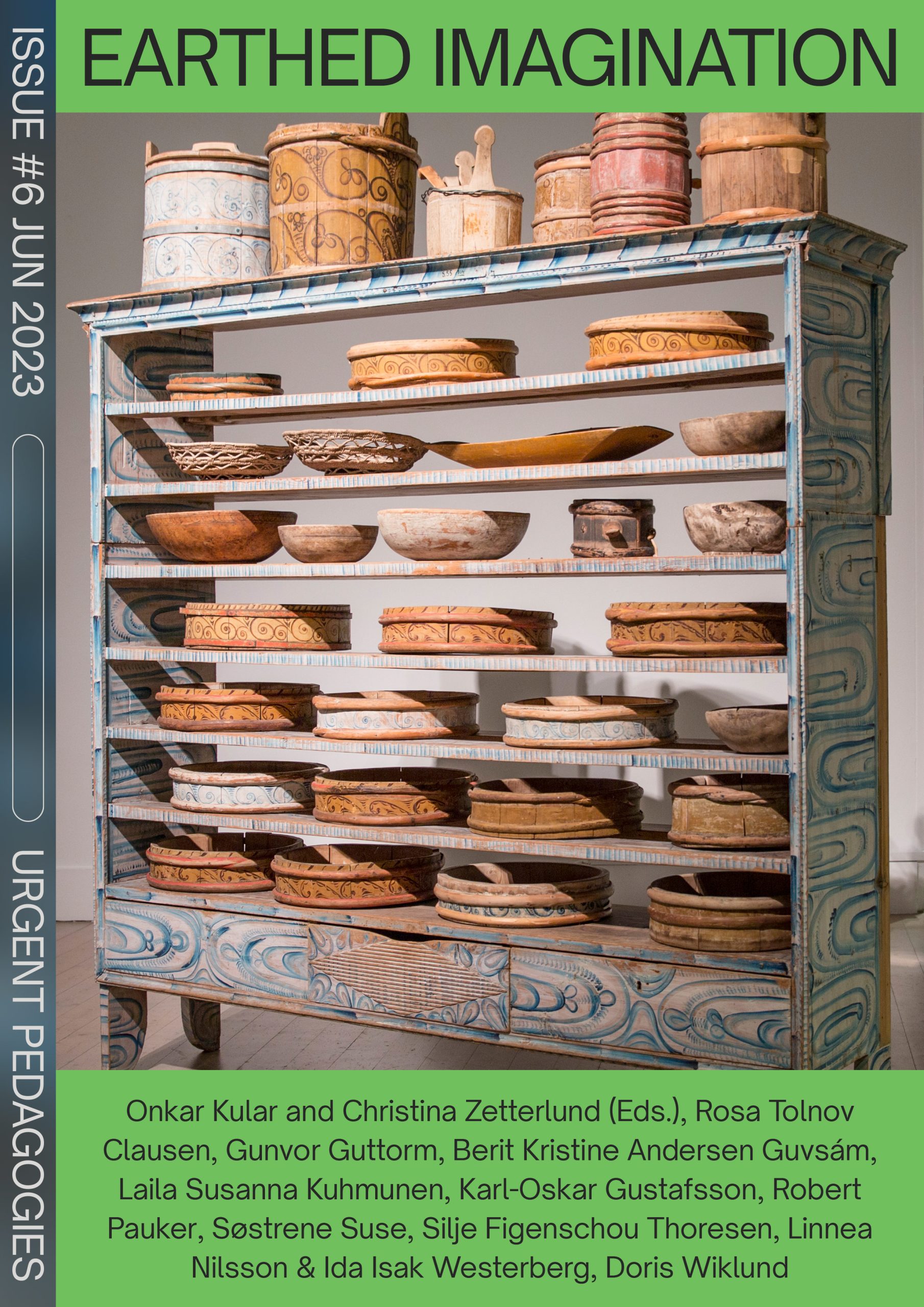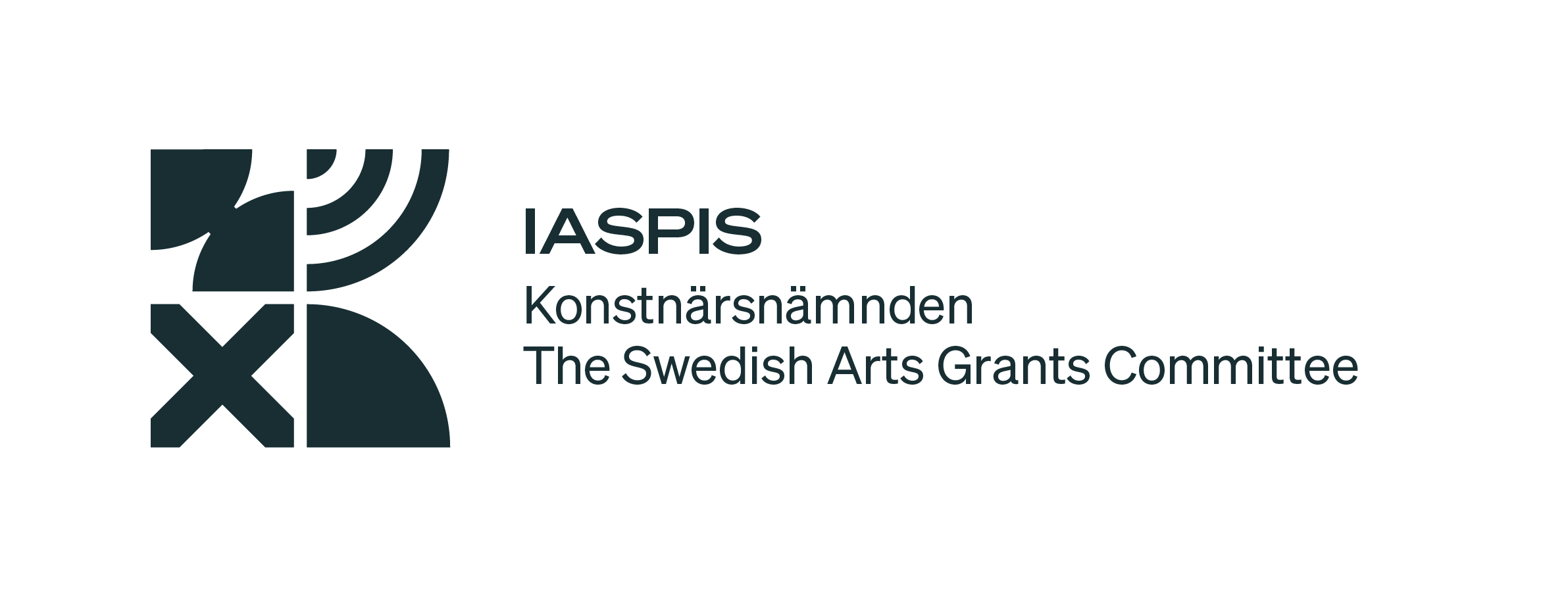Gamla vävnader från Norrbotten (Old weaves from Norrbotten)
Doris Wiklund
CATEGORY
Doris Wiklund is a weaver and has worked as a weaving teacher for many years, and introduced many people in Norrbotten to the craft and joy of weaving. She has also collected historical weavings from Norrbotten, and compiled an archive of knowledge that had not previously been formulated.
This work was published in 1993 in her book Gamla vävnader från Norrbotten (Old Weaves from Norrbotten). Acknowledging a history that for a long time had been overlooked as Norrbotten, which historically was perceived as a wasteland.
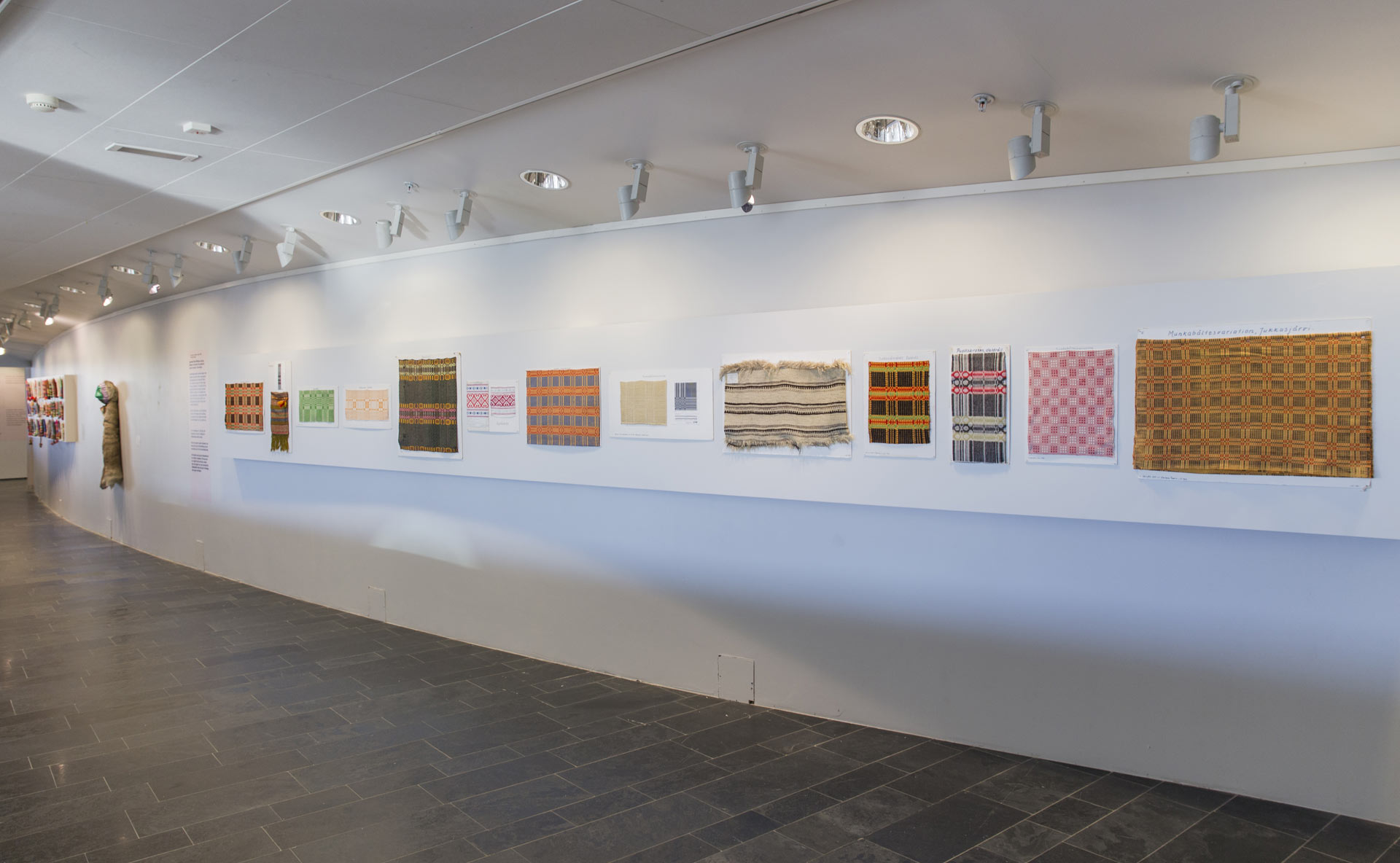
Installation View of Luleå Biennial 2022,Craft & Art, Luleå Konsthall. Doris Wiklund, Gamla vävnader från Norrbotten (Old Weaves from Norrbotten), 1993 Photo: Thomas Hämèn
When Doris Wiklund was given a small sample of a weaving from Jukkasjärvi, she realised how little of the history of traditional weaving from Norrbotten had been compiled and documented. This would become the starting point for her work on the book Gamla vävnader från Norrbotten, for which her students from the region helped her collect weaves from different parts of the county. Often, there would only be fragments left of the historical textiles, but Wiklund was able to call on her vast knowledge to recreate their forms and the techniques used to make them. The work of collecting historical weavings from Norrbotten resulted in a substantial archive that she published in the book. Collecting the weaves was a huge undertaking in numerous ways, the preservation of stories about the people who wove them. Resulting in a historical account that did not just write a geographical history of textile but also chronicled a rich way of life in Norrbotten.
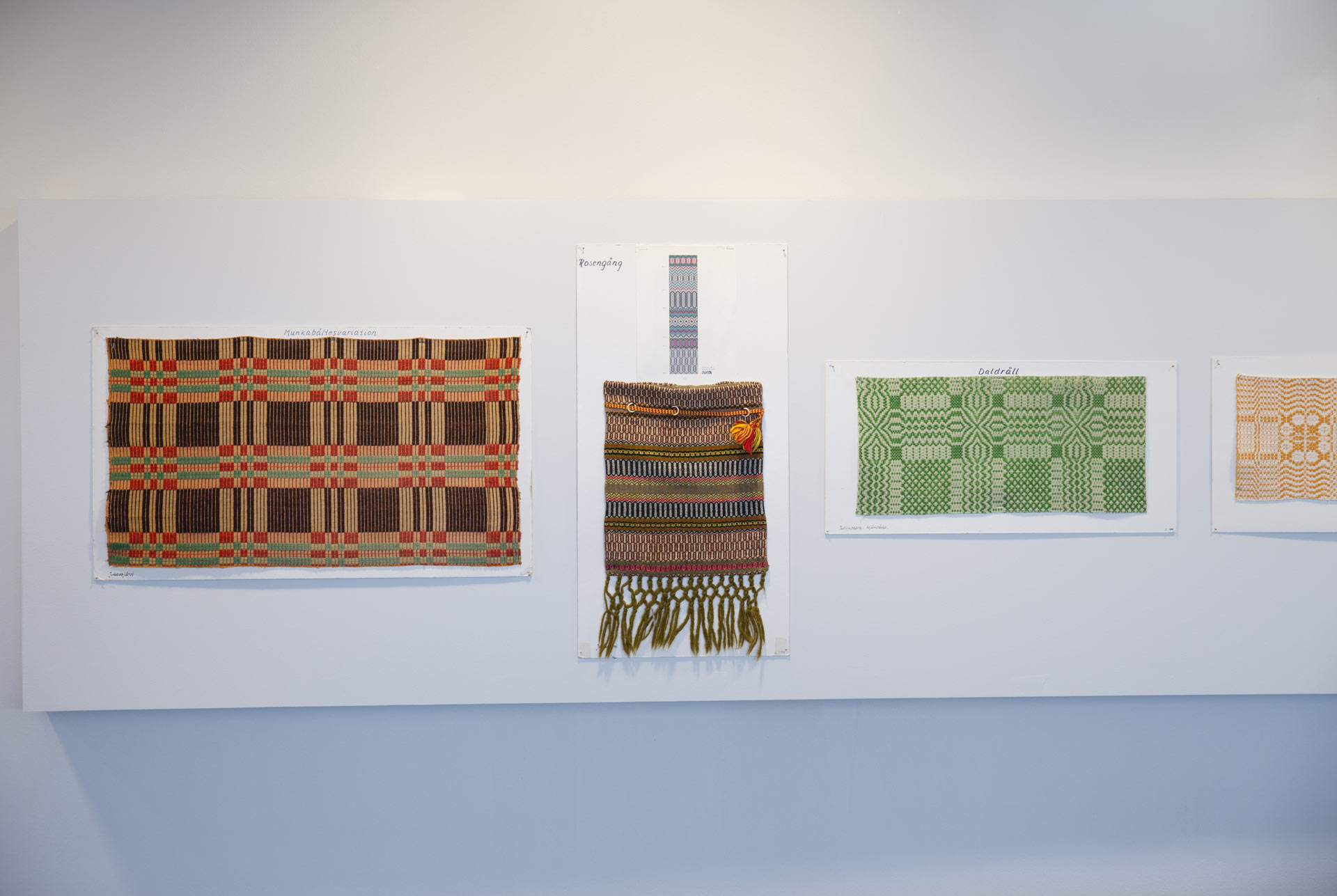
Installation View of Luleå Biennial 2022,Craft & Art, Luleå Konsthall. Doris Wiklund, Gamla vävnader från Norrbotten (Old Weaves from Norrbotten), 1993 Photo: Thomas Hämèn
As well as documenting weaves and weaving stories, Gamla vävnader från Norrbotten is also a compelling documentation of weaving notes and diagrams, it acts as an “open source” documentation, giving future generations the opportunity to further develop and build upon the rich, textile heritage of Norrbotten.
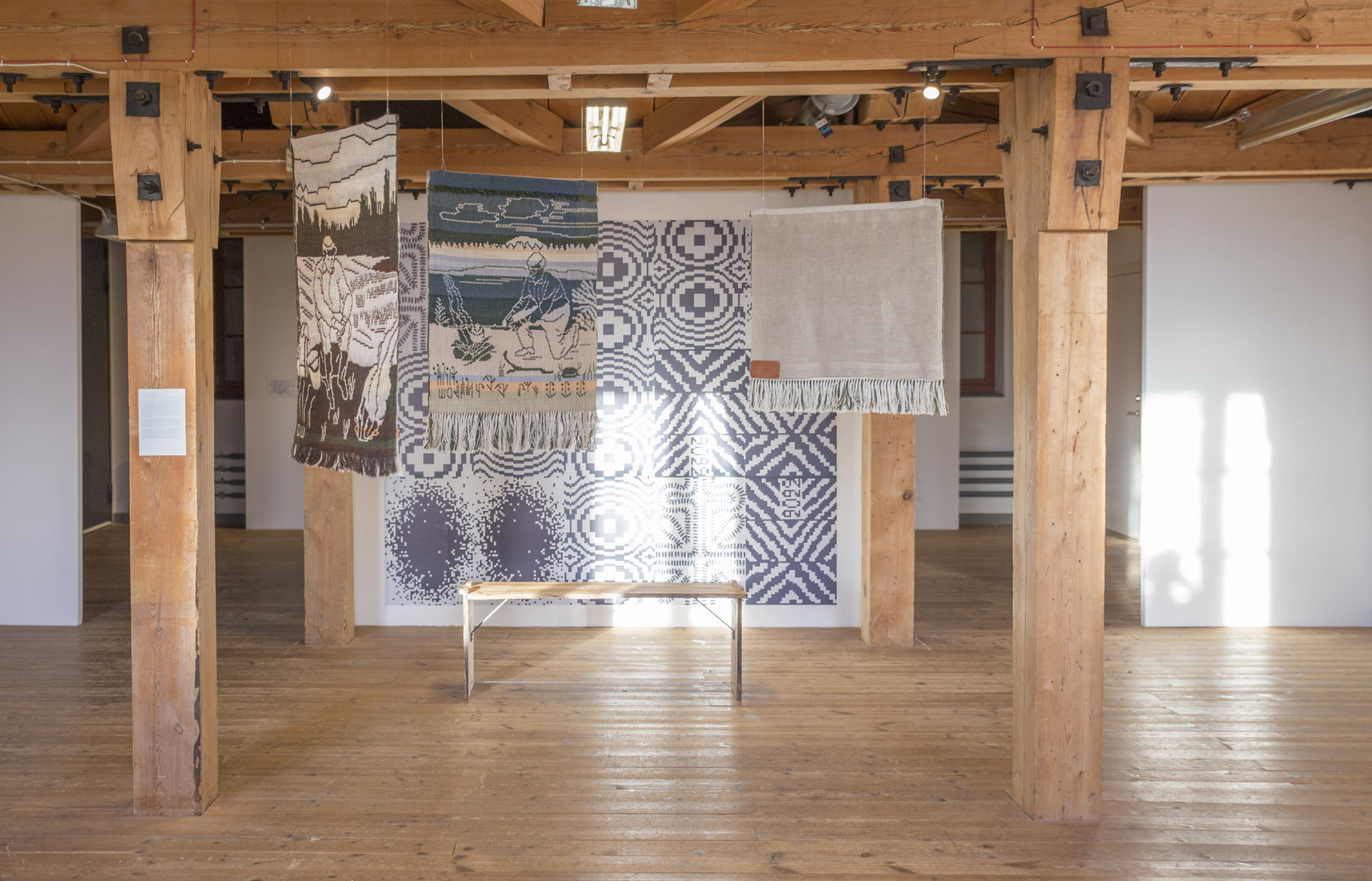
Installation View of Luleå Biennial 2022 – Craft & Art, Havremagasinet Länskonsthall. Doris Wiklund, Farfar på fiske i Lappland, (“Grandfather Fishing in Lappland”), 1997 and Jean i hjortronskogen, (“Jean in the Cloudberry Woods”), 1980 Photo: Thomas Hämèn
The following are a few words from Doris Wilkund herself:
I began collecting materials when I was still young, but most of the documentations I’ve made came about thanks to students I’ve had in my classes at Komvux (adult education). In one way or another, I got them interested in old textiles, and so, they brought weaves in to show me, which I was then lent so I could analyse and make drawings of them. If I hadn’t done this, much of the knowledge would have been lost.
The story has always been that Norrbotten never really had a textile tradition of its own, but with my book (Gamla vävnader från Norrbotten), I tried to show that we actually did have one all along, and that I think it’s important to document it.
When you study old weaves, you can imagine what a home in Norrbotten must have looked like back when they were made.
The weaves I have documented were made in the home. Since it was a roadless territory, with great distances between villages and farmsteads, self-reliance was the only option. People had to make their own fabrics and clothes.
—Quotes from a Doris Wiklund lecture at the People’s House Kiruna, October 1995
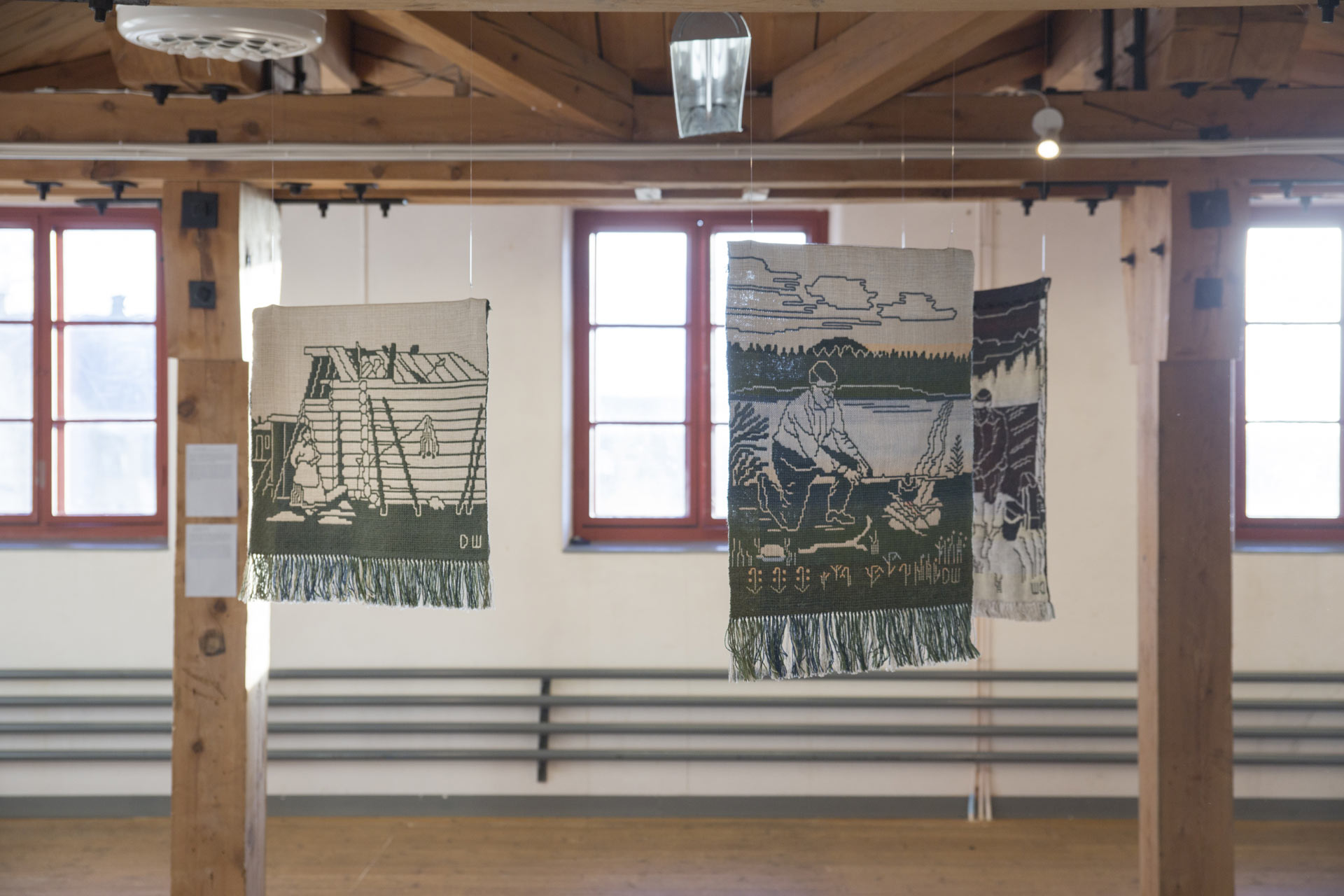
Installation View of Luleå Biennial 2022 – Craft & Art, Havremagasinet Länskonsthall. Doris Wiklund, Brita Maria Larsson vid sin stuga i Käyrävuopio, (“Brita Maria Larsson at her Cabin in Käyrävuopio”), 1998 and Jean i hjortronskogen, (“Jean in the Cloudberry Woods”), 1980 Photo: Thomas Hämèn
Gamla vävnader från Norrbotten (Old Weaves from Norrbotten) is part of Urgent Pedagogies Issue#6: Earthed Imagination
, who was born in Kiruna in 1930, is a weaver and educator. She trained at Friends of Handicraft, and spent many years working as a weaving teacher in Kiruna. She has published four books about her own weaves and historical weaving. Outside of Norrbotten, her work has reached an international audience, partly as a result of one of her books being translated to English.
Luleå Biennial 2022, Craft & Art: https://www.luleabiennalen.se/en/2022
